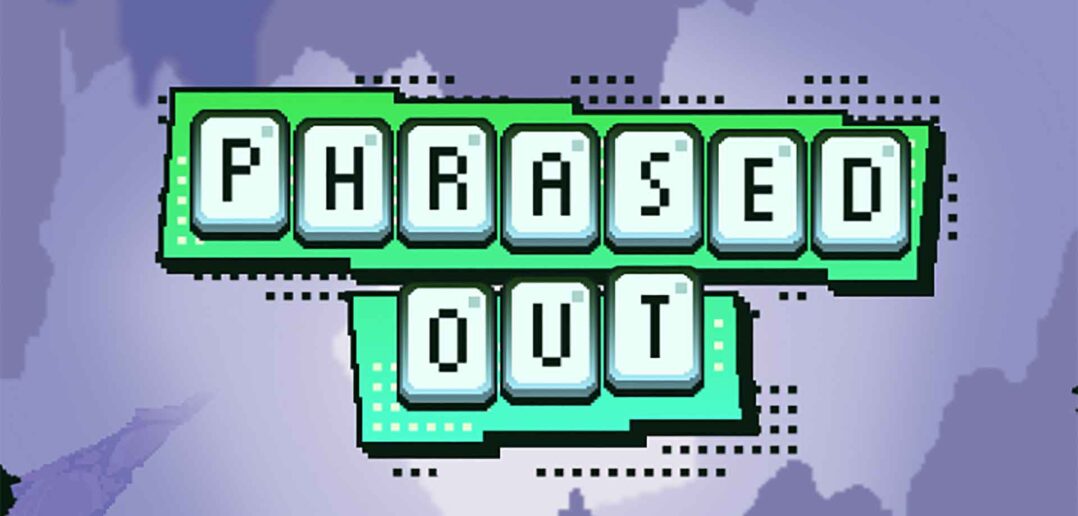Phrased Out is a recently released trivia game for both IOS and Android. Rather than being a simple question and answer style game, it tries to shoe-horn in somewhat of a story line to try and make things a little more interesting.
This game came to my attention when I was randomly browsing the Google Play Store on my phone and it came up in my suggestions. It came across as an interesting way of combining trivia with an engaging story. Does it do a good job? Let’s find out.
Gameplay
The concept behind the game is really quite simple. When you first launch into the game, you’re taken through a few tutorial levels. Here you are introduced to the two characters, BeepBoop and The Child.
You’re taken through a series of example questions. These take the form of a topic, with a clue being provided by BeepBoop. The best way of describing how to answer these questions is to think of the game Hangman. You basically guess letters and if you get it right, the letter will appear at the appropriate places in the answer. If you get it wrong too many times, you eventually lose the round.
Once you complete the tutorial you are then taken into the game proper. Here you will be able to select your own topic from a choice of three, or the option to select a random one. The topics change each time, and cover topics such as Animals, Internet Culture, Movies and TV, Geography, Games and Comics and more.
When you’re answering the questions, you also have a limited number of “Assists”. These assists allow you to stop the clock, give you a free letter, or skip to the next question. Use them sparingly though because they’re limited in supply.
Where the story line enters into is that you also unlock various “chips” along the way which helps you learn about the mysteries of the troubled planet you find yourself in. If you choose to go along with this, it adds a whole new RPG element to the game.
Once I started getting into the game, it was really extremely engaging. I really didn’t want to stop playing once I had started. You get that feeling of achievement when you got an answer right, especially for topics that I might not be as familiar with. It was also very easy to get the hang of the basic game. It was only a minute or two into the tutorials that I found I was really able to navigate my way around the game.
One thing that I did notice is that you are frequently asked to watch ads as a way of earning further assists, amongst other things. This does get tiresome after a while. Having said that, you can go into the Workshop and under the “More Chips” section you are able to go ad-free for up to 30 days at a time. At $2.99 for 30 days (I would presume it’s $US), this is a lot cheaper than I’ve seen in other games that offer this option. This is hardly going to break the bank if you want to help support the developer. I have mixed feelings about where they hid this option as well. On the downside, it is difficult to find for those that genuinely want to support the game. On the upside, it’s at least more difficult for a random child to run up charges on Mum and Dad’s credit card.
Graphics
This is where people might have mixed feelings. The graphics take on the form of a graphics style colloquially referred to as “8-bit pixel art”. This is a fancy way of saying that the graphics resemble the types of graphics used in home video game consoles from the 1980s and early 1990s such as the Commodore 64 and the Nintendo Entertainment System.
As someone who grew up in this era, and still has a Commodore 64 and a few BBC Micro machines, I absolutely love this graphics style. It’s a very tasteful nod to the early days of home computing. The music style also has a very familiar feel if you’ve ever played games on a Commodore 64. I have a sneaking suspicion that the game authors were also owners of Commodore 64’s back in the day.
Some may be a little bit disappointed they’ve gone down this path. I personally love it though, partly because I have my own collection of vintage computers, but also because there seems to be a renewed interest in the retro computer gaming scene over the last couple of years. Having a few new games give a nod to the early days of computing might just allow a few newcomers to develop an interest in the vintage computing scene.
My only criticism is that you are locked to a portrait screen mode. This might not be a huge issue for some. However given for this site I tend to prefer using graphics from the landscape screen mode, it made it a little bit trickier to go for a screenshot.
Verdict
My initial impressions of this game were excellent. It is very simple, yet very effective. The nod to the early days of computing were a real nod to someone like me that has an interest in vintage computing.
If you’re looking for a trivia game that has a modicum of a story line to it, you really can’t go past this game. It’s very well done and once you start it might be very difficult to put this game down.



